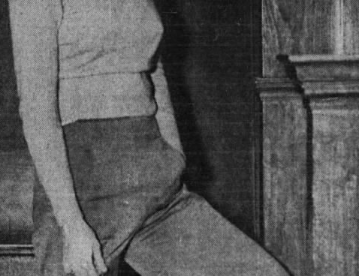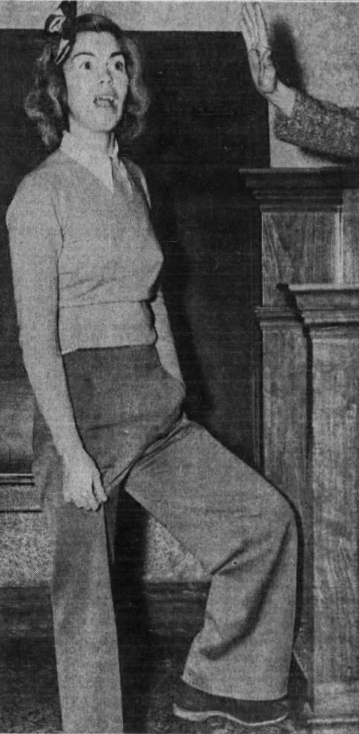Denim Dresses Were The Old Black

On Wednesday, November 9, 1938, a purse-snatching victim named Helen Hulick came to court, expecting to be the star witness against the pair of thieves who had previously victimized her. She didn’t get to testify. Instead, she was instructed to come back a few days later, which she did. And she — not her assailants — ended up in jai
Her crime? She wore pants. Twice.

Pants have been around for a long time, but the idea that women should be able to wear them is a lot newer than we’d care to admit. And when Hulick, then a kindergarten teacher, showed up to the courtroom that Wednesday, she was reminded of this hard truth by the man wearing a robe.
According to the Los Angeles Times, Judge Arthur S. Guerin wasn’t fond of Ms. Hulick’s attire, and when she came up to the witness stand (above), Judge Guerin told her not to bother. Instead, Guerin informed her that she would have to return at a later date in what he deemed proper attire. Hulick protested, noting that her wardrobe was comprised of slacks and a lone formal gown, leaving her with few if any “appropriate” options. Further, she told the press that “if he orders me to change into a dress I won’t do it. I like slacks. They’re comfortable.”
The judge stood his ground, saying that while he wasn’t the arbiter of what was fashionable, “costumes acceptable at the beach are not acceptable in formal courtroom procedure.” Bemoaning, perhaps, that it’s “tough sometimes to be a judge,” he made it clear — if Ms. Hulick were to appear the next Monday wearing slacks again, he’d find her in contempt. And that’s exactly what happened.
When Hulick returned to court, she was, again, wearing slacks. Judge Guerin immediately admonished her but fired back, telling him that, in her opinion, “a judge should keep his personal aversions out of public courtrooms.” The judge did not take kindly to that interruption; he found her in contempt and sentenced her to five days in jail. (There, perhaps ironically, she ended up ordered to lose the slacks in favor of a jail uniform: a denim dress, as seen here.)
Hulick didn’t give up, though. Her lawyers filed a writ of habeas corpus, arguing that the judge didn’t have the power to incarcerate her for wearing slacks. And she won. The appellate court ruled that while Hulick’s outburst may have warranted a response from the judge, that wasn’t the basis for the contempt order. And the actual reason for the punishment — wearing pants — well, that was “a matter not within the court control.” Hulick and women afterward could wear pants to court, without fear of running afoul of the judge.
(Just to be on the safe side, though, when Hulick returned to testify, again, in the robbery case the next January, she wore a dress.)
Bonus fact: Had Hulick done the same thing in Paris, she probably would have lost her appeal. Until 2013, it was illegal for women to wear pants in Paris (save for some exceptions relating to riding bicycles and horses). The ordinance, which had been on the books for about two centuries, had gone typically unenforced, but lawmakers wanted to get rid it as it was “incompatible with the principles of equality between women and men.”
From the Archives: The President’s Pants: A PG-13 conversation with LBJ.
